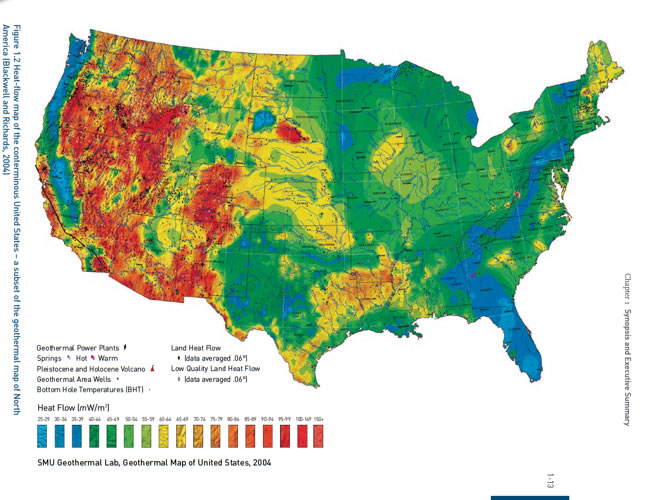Geothermal Energy for Producing Electricity
There is much more geothermal energy under our soil, then we extract. In fact, we have hardly tapped this source. This is true both in places where there is underground water and in places where there is just hot 'dry' rocks.
So far in the United States, there are no standards to be met for the emission of CO2 because the United States has not signed the Kyoto agreement. Nevertheless, geothermal steam and flash plants emit much less CO2 on an electrical generation basis (per megawatt-hour) than fossil-fueled power plants, and binary plants emit essentially none. The concentrations of regulated pollutants – nitrogen oxide (NOx) and sulfur dioxide (SO2 ) – in the gaseous discharge streams from geothermal steam and flash plants are extremely minute. Table 8.1 shows a comparison of typical geothermal plants with other types of power plants (Kagel et al., 2005).

Underground hot water
To be filled in.
Hot Dry Rocks
The 2006 MIT report "The Future of Geothermal Energy" is very optimistic about the generation of electricity from geothermal sources. The map below shows that one quarter of the land area of the US can supply geothermal energy.If water is brought down from the surface to these hot rocks, steam will emerge. These 'hot-dry' rocks can produce temperatures of 300 C if we drill down several kilometers, sometimes as much as 10 km are needed.
.

